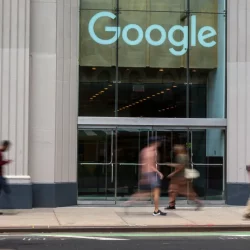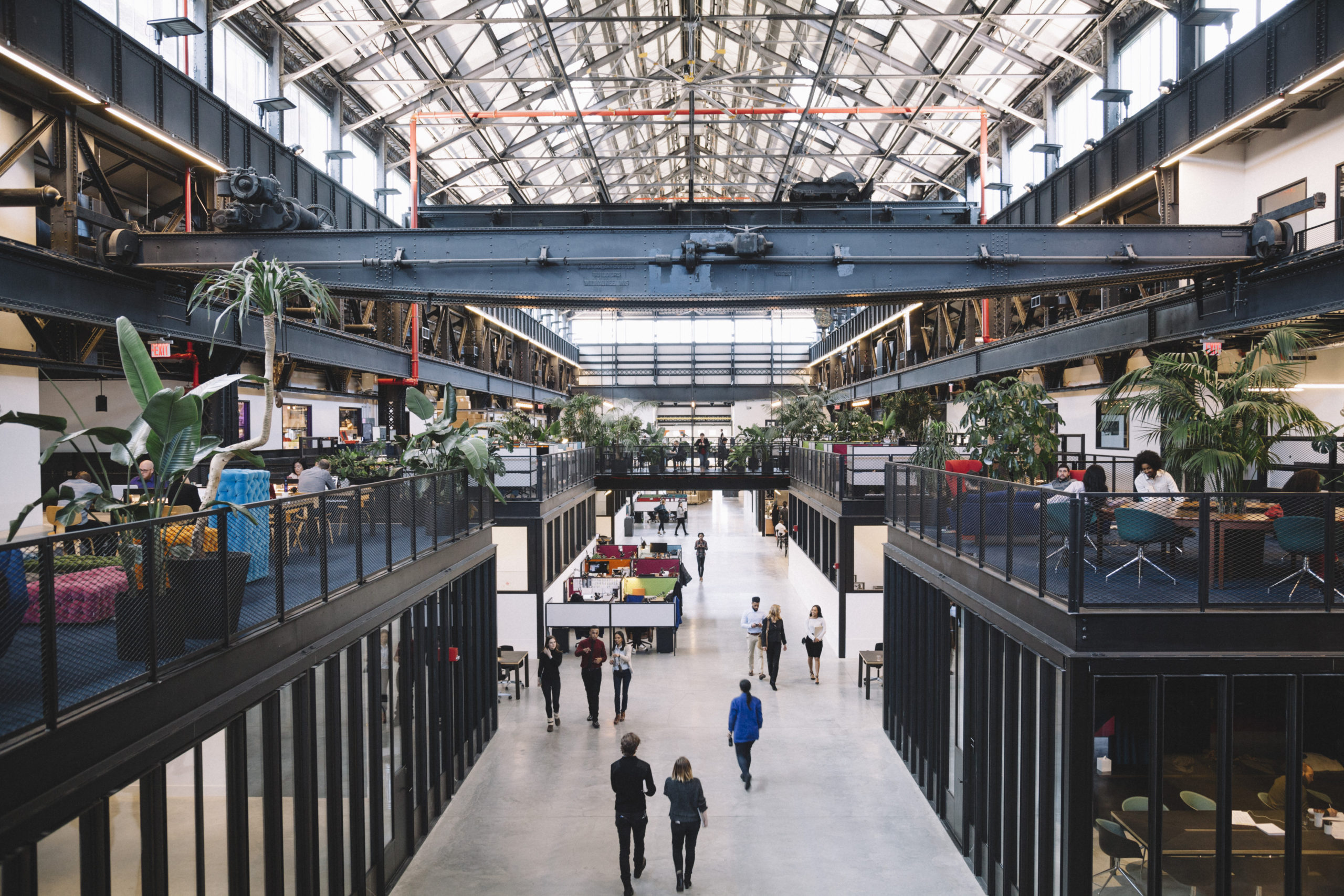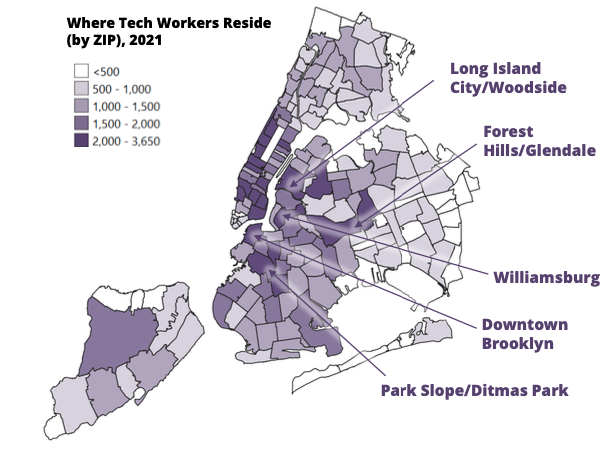
Brooklyn takes key role in growth of NYC tech ecosystems
Increasing jobs more than 42%

DOWNTOWN BROOKLYN — Driven by investments in the Brooklyn Navy Yard and Brooklyn Tech Triangle, the borough has led the decade-long charge to increase New York City’s Tech Ecosystems. A new report has found that tech jobs pay 1.5 times more than other sectors, and make up 7% of the city’s entire workforce.
HR&A Advisors released a new report on Tuesday on the New York City tech ecosystem, commissioned by Tech:NYC, the Association for a Better New York (ABNY) and Google. The report found that the tech ecosystem — including tech roles within healthcare, media, finance and other fields — has contributed massive economic impact and job growth in the city over the last decade.
Specifically, the report found that New York City’s tech ecosystem employed 369,000 people across tech and non-tech sectors in 2021, representing 7% of the city’s entire workforce, and generated 440,000 in added multiplier jobs and $291 billion in economic output for the city, or 28% of NYC’s total economic output.
The report, released almost 10 years after HR&A’s seminal The New York City Tech Ecosystem report in 2013, also examined tech’s growth in boroughs outside of Manhattan, finding that tech jobs in Brooklyn have grown faster than any other borough, increasing 42% since 2012. And while tech job growth is slower in the other outer boroughs, roughly a third of all tech workers in New York City live in Queens, the Bronx and Staten Island, demonstrating how tech’s economic impact is spread across the city.
Key among the report’s findings are:
-
New York City’s tech ecosystem drives economic development across the city’s economy, creating 440,000 added multiplier jobs and offering higher wages for those without a college degree:
-
The sector’s economic output comprises 28% of the city’s overall economic output — twice as much as the sector’s economic output in 2013.
-
Across all tech jobs, real wages and wage growth are both higher compared to other sectors in the economy: the average hourly wage in the tech ecosystem is $48/hour, compared to an average of $32/hour for the overall economy, and over 50% of all tech jobs pay over $40/hour.
-
These economic benefits hold among workers without a bachelor’s degree: tech jobs for these workers pay an average of $30/hour, above the citywide average of $22/hour.
-
-
NYC’s tech ecosystem has contributed to a quarter of the city’s job growth in the past decade. However, tech workers have increasingly moved outside the city:
-
The tech industry added 30,000 jobs to NYC’s economy from 2017-2021, while the NYC job market overall shrunk by 5%.
-
There are now 0.79 NYC residents working in the tech ecosystem for every tech ecosystem job, down from 0.85 in 2012, indicating that NYC’s tech ecosystem is increasingly employing people who live outside the five boroughs.
-
-
Tech jobs in the outer boroughs have grown over the past decade, particularly in Brooklyn:
-
Brooklyn-based jobs have grown by 42% in the last decade, adding 14,000 jobs, spurred largely by investments in the Brooklyn Navy Yard and the Brooklyn Tech Triangle.
-
-
NYC’s tech ecosystem has seen slight increases in nonwhite and female representation, but it does not yet match the city’s overall racial and gender diversity:
-
Black and Latino/a New Yorkers are over half of the city’s population and 35% of the workforce, but New York’s tech ecosystem is 22% Black and Latino/a. The gap is larger in higher-paying jobs: only 9% of NYC’s 53,000 software developers are Black and/or Latino/a.
-
The report also includes several recommendations for people-based and place-based investments to strengthen and diversify the city’s tech sector:
-
Recommendations for people-based investments include:
-
Expanding CS4All with a focus on developing quality K-12 computer science teachers in underserved schools with support from industry leaders.
-
Continuing to invest in CUNY 2X Tech with a continued focus on racial and gender equity.
-
Collaboration between the city and industry to identify equity-driven workforce programs and drive investments to allow them to reach scale, particularly programs outside of Manhattan and those focused on training software developers.
-
Developing stronger outreach and pipelines with historically black colleges and universities (HBCUs) to bring students back to New York after graduation.
-
-
Recommendations for place-based investments include:
-
Investing in neighborhood-based tech infrastructure and workforce development programs in the outer boroughs, leveraging existing assets such as libraries and community centers.
-
Investing in neighborhood-based quality of life initiatives to enable tech workers to work flexibly and remotely without leaving New York City.
-

“It’s clear that tech is a key driver of New York City’s economy. From our healthcare systems to our media and finance sectors, tech workers are critical to the economic strength and resilience of New York City. Over the last 10 years we’ve done a great job in growing our tech talent and cementing New York’s place as a leading tech hub,” said Kate Wittels, Partner at HR&A Advisors. “As we look to the next ten years, both the public and private sectors need to work together to ensure that economic opportunities are felt across the five boroughs. By centering equity as a key driving force, our tech ecosystem will reflect the rich diversity of New York and include all residents of New York City.”

“From the massive economic output to the job creation numbers to the tech ecosystem growth in and out of Manhattan, this report shows exactly why we’re so excited about the future of tech in New York City,” said Jason Myles Clark, Executive Director of Tech:NYC. “We also know that more must be done to ensure that all New Yorkers are uplifted by this growth. We look forward to continuing the ongoing work with our members and city stakeholders to strengthen and diversify the tech ecosystem, while cementing New York City’s reputation as a world-class tech hub.”

“When ABNY partnered on the first big study of NYC’s tech ecosystem back in 2013, we were just beginning to emerge as a premier destination for tech companies and tech talent,” said Steven Rubenstein, Chairman of The Association for a Better New York. “The tech sector has since become a fundamental part of our economic fabric. It’s shown tremendous resilience over the course of the pandemic. And even in the face of fresh challenges today, there’s no question of the long-term growth and success of NYC’s thriving tech ecosystem.”

“Twenty years ago, Google bet on New York as a place where the tech sector could flourish and succeed,” said Angela Pinsky, Head of Government Affairs and Public Policy for Google New York. “This report proves that Google made the right bet, but illustrates how much more can be done to put tech careers within reach of every New Yorker. The public and private sector must work together to increase access to computer science education and training to ensure the tech sector benefits and creates opportunities for all.”
Leave a Comment
Leave a Comment



